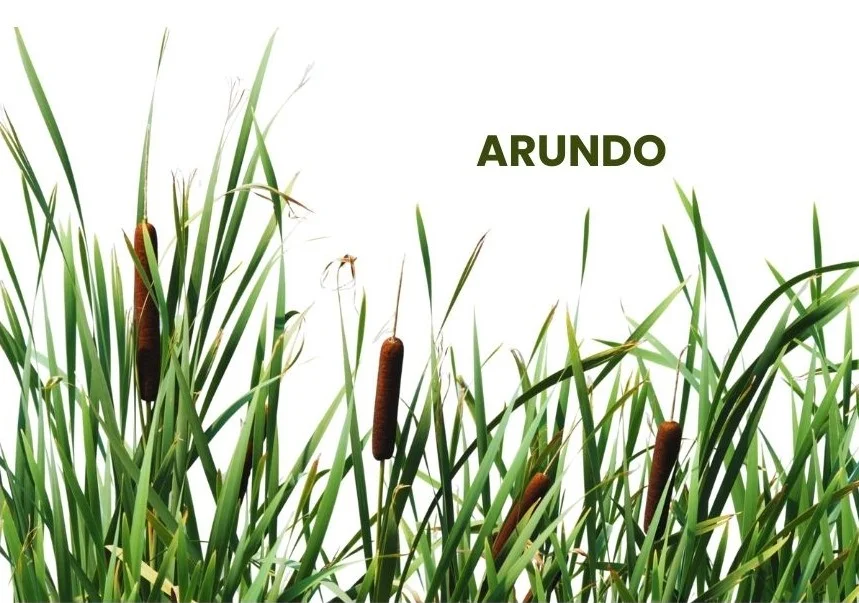Arundo, commonly known as Reed, is a remedy primarily used for catarrhal states and hay fever.
It is derived from the reed plant and is particularly effective in addressing symptoms such as itching, burning, and irritation in various parts of the body.
Table of Contents
ToggleSOURCE INFORMATION

- Scientific Classification: Arundo belongs to the Poaceae family and is classified under the genus Arundo.
- Origin: Arundo is sourced from the reed plant, which is a tall perennial grass found in wetlands and marshy areas.
- Interesting Facts: The reed plant has been historically used for various purposes, including making thatched roofs, musical instruments (such as woodwind instruments), and as a natural filter for wastewater treatment.
DRUG PATHOGENESIS
Arundo is known for its efficacy in addressing symptoms associated with catarrhal states, particularly hay fever.
It works by alleviating itching, burning, and irritation in different parts of the body, including the head, nose, mouth, and skin.
Arundo is also indicated for conditions like eczema, diarrhea in nursing children, and respiratory issues like dyspnea and cough with bluish expectoration.
KEY CHARACTERISTICS
- Itching and burning sensations: Arundo is characterized by intense itching and burning sensations, particularly in the head, ears, nose, mouth, and skin.
- Affinity for catarrhal states: It is highly effective in addressing symptoms of hay fever, including sneezing, itching of nostrils, and loss of smell.
- Desire for acids: Patients needing Arundo often have a longing for acidic substances.
- Eczematous conditions: Arundo is beneficial in treating eczema with itching and crawling sensations, especially in the chest and upper extremities.
DETAILED ORGAN SYMPTOMS
Ears: Burning and itching sensations in the auditory canals, accompanied by eczema behind the ears.
Nose: Hay fever typically commences with a burning and itching sensation in the palate and conjunctiva.
Annoying itching is felt in the nostrils and the roof of the mouth.
Coryza, characterized by a runny nose and loss of smell, may occur.
Sneezing and itching of the nostrils are common symptoms.
Mouth: Individuals may experience burning and itching sensations in the mouth, along with bleeding gums.
Ulcers and exfoliations may develop in the commissures, and fissures can form on the tongue.
Stomach: A sensation of coldness in the stomach may be present, along with a longing for acidic foods.
Abdomen: Sensations of movement resembling something alive may be felt in the abdomen, accompanied by flatulence and pain in the pubic region.
Stool: Stools may appear greenish in color, and individuals may experience burning sensations at the anus. Diarrhea is common in nursing children.
Urine: Burning sensations may be felt during urination, and red sediment may be present in the urine.
Male: Pain in the spermatic cord may occur after physical intimacy.
Female: Menstrual periods may occur too early and be profuse.
Neuralgic pains may radiate from the face to the shoulders and pubic area.
Vaginal pruritus (itchiness) may be present.
Respiratory: Symptoms may include dyspnea (difficulty breathing), coughing, and expectoration of bluish mucus.
Burning and pain in the nipples may also be experienced.
Extremities: Itching and burning sensations, along with edema (swelling) of the hands and feet, may occur.
Burning and swelling of the soles of the feet are common, as well as copious and offensive sweating of the feet.
Skin: Eczema, itching, and a crawling sensation, particularly in the chest and upper extremities, may be present. Fissures may develop in the fingers and heels.
REMEDY RELATIONSHIP
- Arundo can be compared to Anthoxantum (sweet vernal grass), Lolium, Sabadilla, Silica, and Sulfur.
- It shares similarities with these remedies in addressing hay fever, catarrhal states, and respiratory issues.
DOSE
- Arundo is typically prescribed in potencies ranging from third to sixth.
Frequently Asked Questions
What is the scientific classification of Arundo?
- Arundo belongs to the Poaceae family and is classified under the genus Arundo.
What are the key characteristics of Arundo?
- Arundo is known for its intense itching and burning sensations, particularly in the head, nose, mouth, and skin. It is indicated for catarrhal states, hay fever, and eczematous conditions.
What are the organ symptoms addressed by Arundo?
- Arundo addresses symptoms such as itching, burning, pain, and discomfort in various organs, including the head, nose, mouth, stomach, abdomen, respiratory system, extremities, and skin.
How is Arundo related to other remedies?
- Arundo shares similarities with remedies like Anthoxantum, Lolium, Sabadilla, Silica, and Sulfur in addressing hay fever, catarrhal states, and respiratory issues.
What is the recommended dose of Arundo?
- Arundo is typically prescribed in potencies ranging from third to sixth for optimal efficacy.
Meaning of Difficult Words
- Mucous: Relating to or secreting mucous, a viscous substance produced by mucous membranes.
- Palate: The roof of the mouth.
- Conjunctiva: The mucous membrane that covers the front of the eye and lines the inside of the eyelids.
- Neuralgic: Relating to neuralgia, a sharp, stabbing pain along a nerve or group of nerves.
- Potency: Refers to the strength or concentration of a homeopathic remedy.
